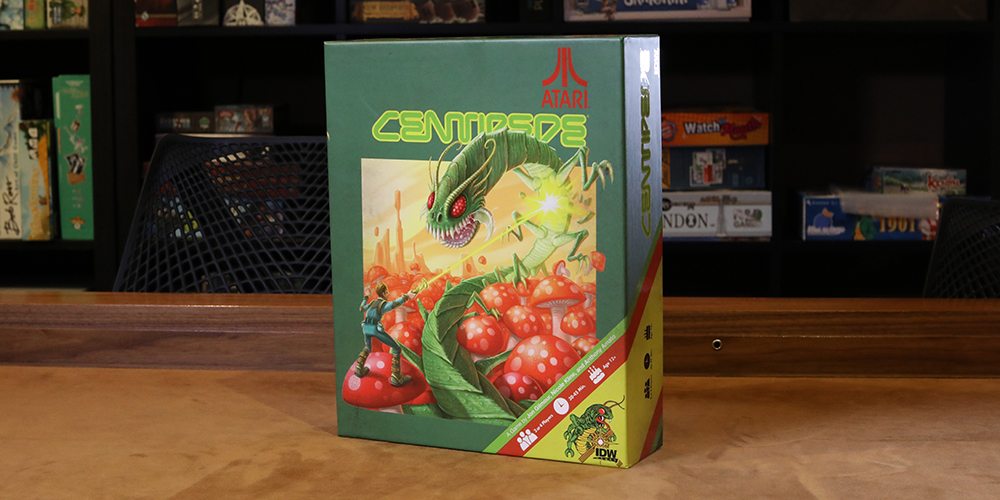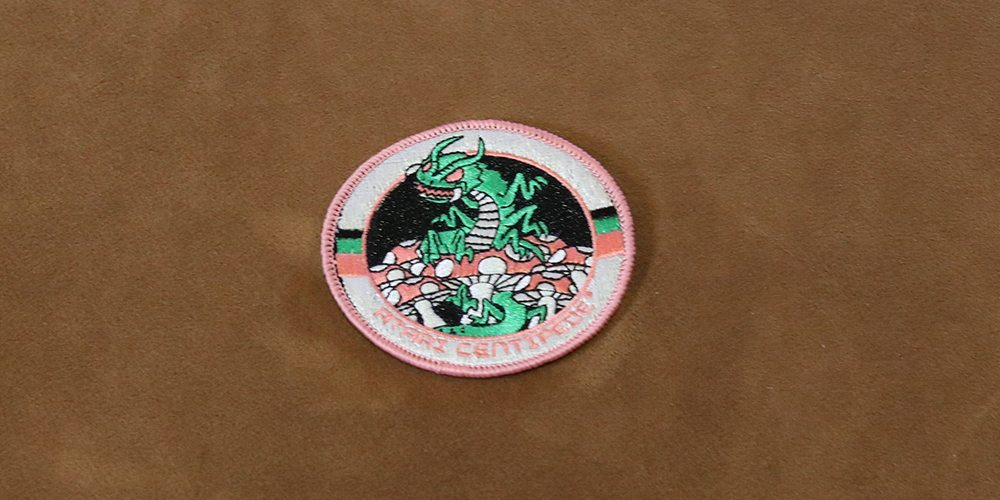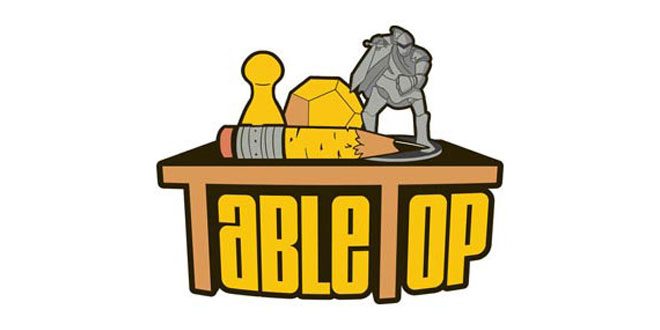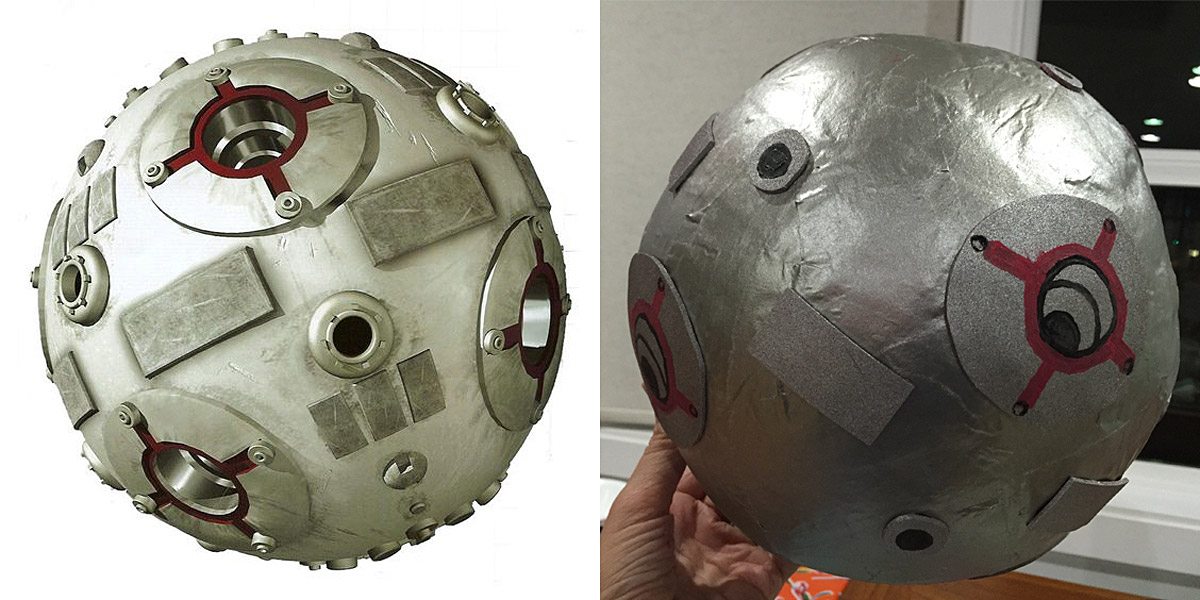
Slap down your quarters, kids. Arcade gaming has come to tabletop in the form of Atari: Centipede, from IDW Games, a 2-4 player game for ages 12 and up that plays in about 30-45 minutes.
What Is Atari Centipede?
Atari: Centipede, a new game from IDW Games, is the cardboard version of one of the more popular 8-bit arcade games, Atari’s Centipede. In the arcade version, players would control a character at the bottom of the screen with a trackball. You could cause the character to fire a laser at the centipede who would move down screen toward you, while navigating a minefield of mushrooms. Any time the player hit the centipede, it created another mushroom. The centipede was also joined by spiders and fleas and scorpions and, later, by additional centipedes. Centipede was later ported to Atari consoles and enjoyed an arcade sequel called Millipede.

Atari: Centipede Components
The components of this game are some of its best parts. The art on the box reminisces to the mural on the side of the arcade cabinet. The board is meant to remind you of a screen in its orientation and all the wooden bits, in their jagged 8-bit glory, hearken back to an arcade game room.
In the box, you’ll find:
- 1 game board
- 2 decks of 11 Centipede cards
- 1 Dice pool card
- 1 Creature speed card
- 7 Gnome control cards
- 6 Gnome dice
- 2 Gnome tokens, one blue and one green
- 30 Mushroom tokens
- 3 Flea tokens
- 3 spider tokens
- 12 Centipede segments (Six segments in two colors, blue and green)
- 1 Collector’s badge
The cards are decent quality with awesome art that will remind you of Atari artwork from days gone by. The centipede cards have two backs, one in blue and another in green, one for each player in a four-player game.
The dice all have the same faces and have a series of directions on them, which must be resolved in order, from left to right. The stars denote firing your weapon, while the number tells you how many spaces to move your gnome. The rectangle allows you to reset the gnome control cards. They are very good quality, although the numeral one on the dice looks a little like the “fire” icon, so you have to make sure you are doing what you’re supposed to.

The wooden bits — gnome, mushroom, and bug tokens — are amazing. Each piece is shaped to look like a tangible, 3D version of its onscreen counterpart. The gnomes and centipedes are in blue and green, the mushrooms are red, and the fleas and spiders are a golden yellow. Every piece is crafted of jagged edges to simulate an 8-bit game. The centipede segments are each decorated with a decal of a head on one side and blank on the other, making it possible to quickly break an arthropod into two separate creatures simply by flipping a segment.
Finally, the collector’s badge is an embroidered patch with a menacing centipede nestled among a mushroom forest. The badge is limited to the first 2600 copies of the game. (Get it? Atari’s first home console? Pretty clever!) So make sure you snag one before they disappear.
How to Play Atari: Centipede
The following describes a two-player setup and game. The four-player version is almost exactly the same, only duplicated, with a few minor changes.
Before play, both players take turns placing three mushrooms on an empty board. No column may have more than three mushrooms and no mushroom may be placed on a centipede spawn point. After the mushrooms are placed, an argument is had about which player will be the centipede and which the gnome.
The board is symmetrical, so it doesn’t matter which side you sit on. However, each side has a color, so you should take the gnome/centipede segments of the color on your side of the board. The gnome is placed at a location of the player’s choosing in the movement area. That player then takes all the dice, rolls them and puts them on the dice pool card. They also get the gnome control cards, placed at the base of their side of the board.

The centipede player, sitting opposite, shuffles all 11 centipede cards and draws 3 as a starting hand, and sets the remaining cards as a draw pile next to the creature speed card, which serves as a player aid. They set the flea and spider tokens nearby and place all six centipede tokens of their color to form a single centipede, emerging from one of the spawn points. Then the player advances the centipede six spaces. You are now ready to play.
The Gnome’s Turn
On the gnome’s turn they do two things: first, they check to see if the dice pool needs to be refreshed. If there is only a single die on the dice pool card, reroll all six dice and place them on the card. Otherwise, the player chooses a die and executes its actions before placing it in a dice discard pile.
A number on a die tells the player how many spaces to move. The player can choose which direction to move but must move the full number of spaces shown on the die, if able. A star symbol allows the gnome to shoot, and firing the gnome’s weapon, a magic wand, shoots a beam of magic energy directly up from the gnome’s current position. If it hits a mushroom, flea or spider, they are removed from the board and returned to the supply. If the beam hits a centipede, that segment is removed from the board and replaced with a mushroom from the supply.
Optionally, the gnome may also use one of its control cards. There are four of these cards and each bestows a special power. One card allows an additional movement of one space, another allows one additional shot, one card allows the gnome to remove one mushroom from the board, and the final card allows the gnome player to refresh the dice pool. Once these cards are used, they are exhausted and flipped to show they have been used. If a player picks a die side with a rectangle on it, the player may choose an exhausted card to recharge. Alternately, if you didn’t use a control card that turn, you may recharge an exhausted card at the end of your turn.

The Centipede’s Turn
On to the turn of the ‘pede. On the turn of this many-legged creature, there are three steps. First, the centipede player selects a card from their hand to play. The instructions on the card are followed and then the card is discarded. Next, bugs are moved according to the Creature Speed card. Bugs may be moved in any order, but you must complete one bug’s movement before going on to the next one. Finally, the centipede player draws a card. If there are no cards left, shuffle the discard pile and draw from the new deck.
The centipede’s cards allow for a couple of a number of benefits. Four of the 11 cards are mushroom cards, allowing the player to place a mushroom on an empty space on the board; this can be beneficial to movement. One card allows a flea to be spawned and two cards spawn spiders. One card allows a baby centipede of just one segment to be spawned and two cards allow a centipede of all the centipede segments in your color that reside in the supply to come back in the game as a single centipede. Lastly, there is a Berserk! card which drives the centipede due south, toward the gnome, two squares. There are, of course, additional rules that govern all this, but these are the basics.
In terms of movement, a smaller centipede moves much faster than a large one. Additionally, a respawned centipede gives a speed bonus to all bugs. Centipedes always move horizontally in the direction the head is pointed. Once a centipede reaches an obstacle, be it a mushroom, another bug, or the edge of the board, it drops down a row and reverses direction (anything that would prevent this downward movement is removed from the board.
Spiders move vertically or diagonally, nine spaces. It can’t change direction during a move and removes any mushrooms it runs into. The spider can’t leave the board, nor enter the gnome’s movement area. The flea always moves 2 squares, always toward the gnome. Anything it hits is removed from the board. The player may place a mushroom in each space a flea has passed through.
Game Over … Enter Your Initials
Play continues until all of the centipede segments are removed from the board, either by the gnome shooting or the flea running into them, in which case the gnome wins, or if the centipede enters the gnome’s movement area or a spider or flea occupies a space directly above the gnome, in which case the centipede wins.

Should You Play Atari: Centipede?
As a kid who grew up in arcades, who cut my teeth during the 2600 craze of the late ’70s, I was really excited when I saw that IDW was bringing that 8-bit fun to the tabletop. Keep in mind that Centipede is just the first of three Atari titles that IDW is doing — Missile Command is scheduled to hit the first week of March and Asteroids later next year.
I think they’ve done a fantastic job of capturing an arcade game in a board game. From the artwork to the cards to the tokens, it just has that feel. You can almost see the flicker of the CRT screen when you look at the board. However, in the games we played, the faithfulness to the arcade game showed up in the game play, as well. You know how you would feed quarter after quarter into a game, trying to beat the boss? This feels a bit like that.

Atari: Centipede felt unbalanced as the centipede won time and time again. Whether as two player, as four, after switching roles, it definitely felt like the centipede had an advantage in this game. And it wasn’t just me. When I brought Atari: Centipede to my game night, the same result happened again and again. That’s not to say the gnome didn’t ever win because it did — but it took quite a few plays to begin coming out ahead and more than a bit of luck. This led to a surprising discovery: the more we played, we discovered a deeper strategy in how to play the roles. It made us realize there was more to the game than meets the eye.
In the first game, you’re just told to place mushrooms, but mushroom placement becomes very important for both roles. The gnome doesn’t want mushrooms and wants more higher up the board, the centipede wants lots of mushrooms and wants to arrange them in a way that funnels it toward the gnome faster.

It’s fun, especially as a piece of nostalgia. It’s gorgeous and whenever I set it up, it was an attention getter. I see that the designers have identified some rules to try to balance the game more and, while I haven’t tried them out yet, I get the feeling that this game wasn’t playtested enough before going to print. If it had, I think they would have added these rules from the get-go or an admonition that advanced players should play the gnome, while beginner players take on the centipede. Without them, I fear some won’t stick with the game long enough to learn that there’s more there than the first few games let on.
Still, while I really enjoyed having the choice of movement as the gnome player, picking from the dice in my dice pool, at times I felt penned in by limited choices. In terms of theme, I don’t know if this was meant to simulate the corral that pursuing bugs will sometimes lock you in during a game, but luck of the rolls can really make life difficult from the beginning. I lost more than one game simply because I couldn’t move the right number of spaces to shoot the centipede and that didn’t feel fair.

The four-player version of the game does ratchet the excitement a bit. I appreciated the teamwork aspect of this mode and discussing options and planning made four-player more than just adding more pieces to the board. I did like this version a lot.
All in all, I loved the art and the theme and I ended up enjoying the challenge of playing as the gnome against the centipede, but I’m not sure I really liked the unexpected balance. After about 20 plays, the centipede still seems to have an unfair advantage. But it did in the arcade, too. Still, I am really looking forward to seeing what IDW does with Asteroids and Missile Command!
Atari: Centipede is available now and retails for $39.99.

Click here to see all our tabletop game reviews.
If you’d like to stay up-to-date with all of our tabletop gaming coverage, please copy this link and add it to your RSS reader.
Disclosure: GeekDad received a copy of this game for review purposes.




